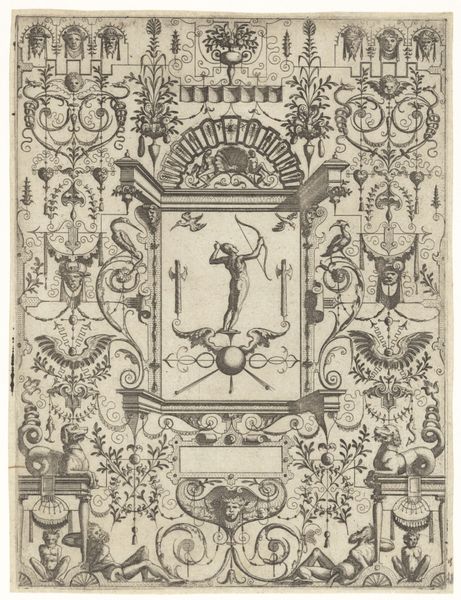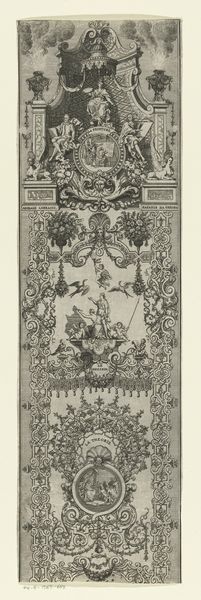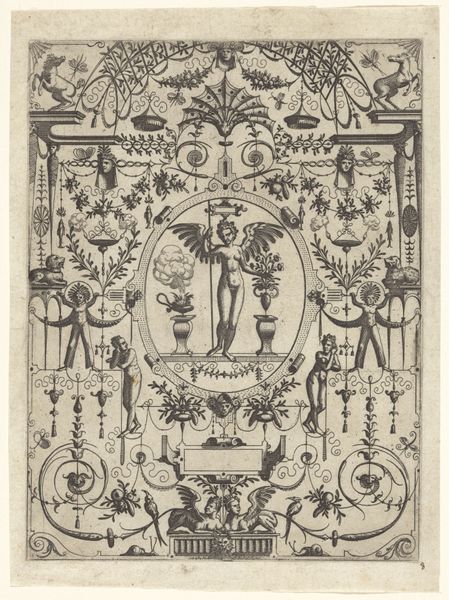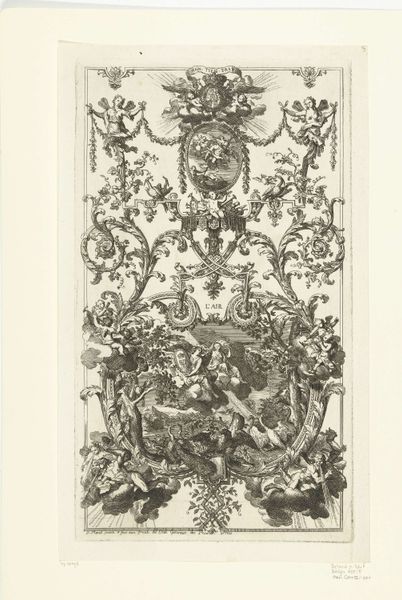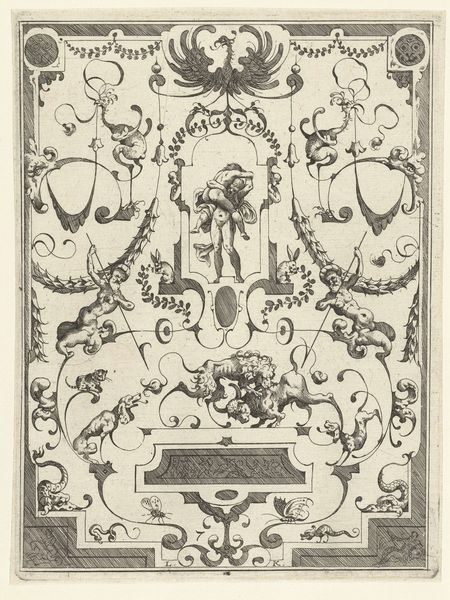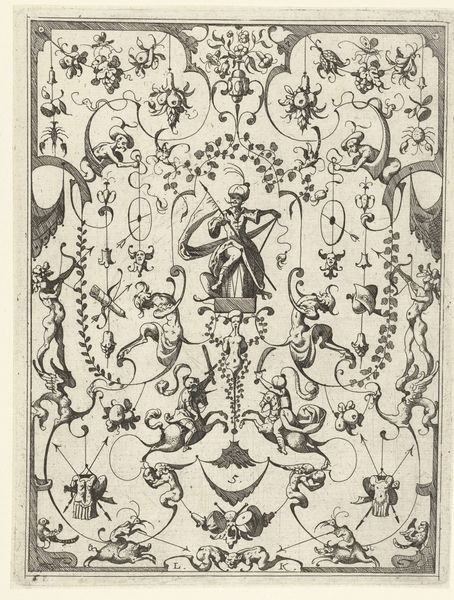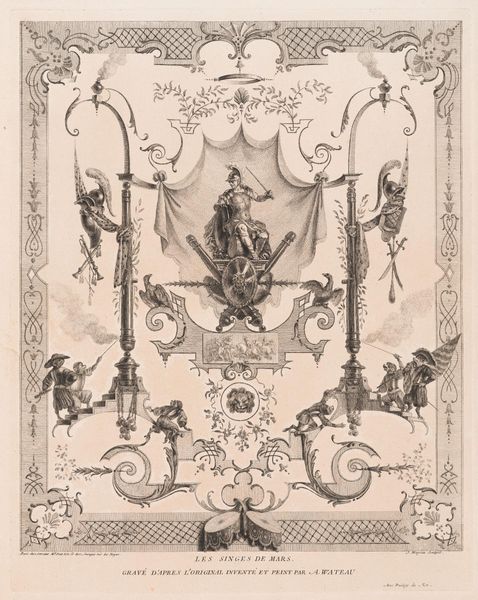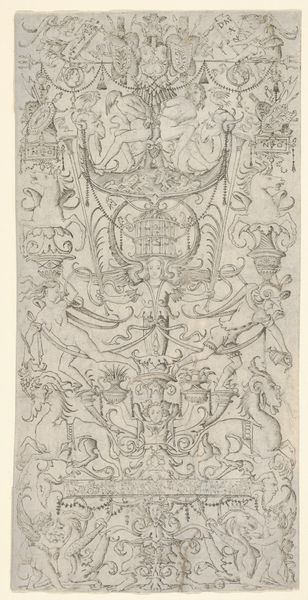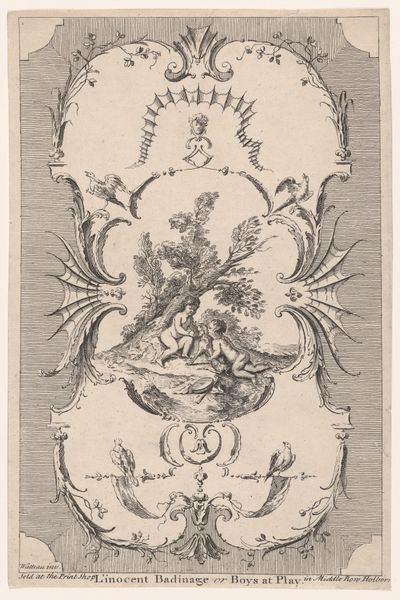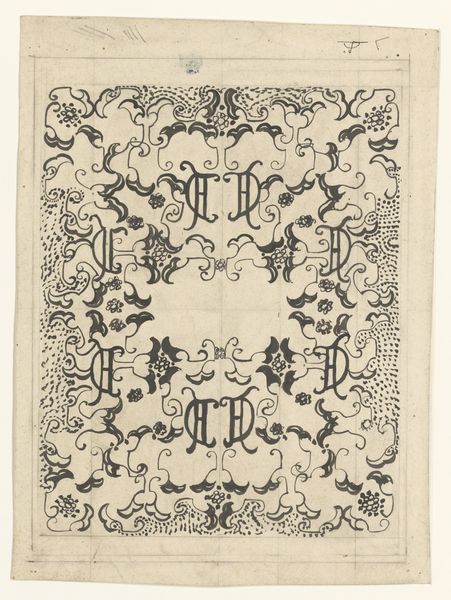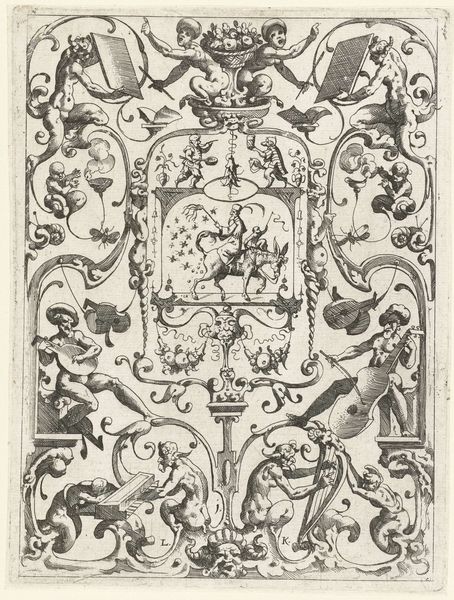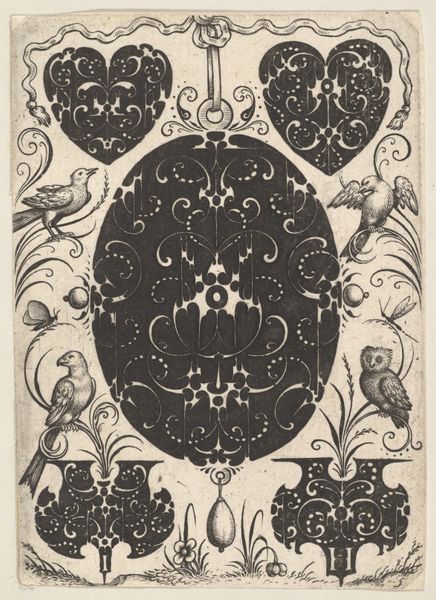
drawing, print, ink, engraving
#
drawing
#
baroque
#
pen drawing
# print
#
pen illustration
#
old engraving style
#
ink line art
#
ink
#
line
#
engraving
Dimensions: height 389 mm, width 260 mm
Copyright: Rijks Museum: Open Domain
Curator: This highly ornamental engraving, dating from 1714, depicts the state carriage of the Duke of Ossuna. It’s by Bernard Picart, rendered in ink and engraving. What strikes you most about it? Editor: Its overwhelming, dizzying even! There's so much visual information packed into every square inch. It almost feels less like an image *of* something, and more like pure Rococo excess distilled into a black and white print. Curator: Absolutely, the Baroque style is alive and well here! Note the recurring cherubs and floral motifs. Consider the deeper symbolic resonances of this carriage beyond mere transportation. In some ways, it feels like an icon. Editor: An icon of power, certainly. The central cartouche, picturing what seems like a regal figure in a chariot pulled by swans...it evokes classical mythology. But placing it within *this* elaborate framework? That's all about earthly, rather than divine, authority, isn’t it? It screams status and importance. Curator: It does! The image uses inherited mythologies of power to bolster the Duke's image. And look at the edges – those densely layered floral patterns remind me of textile designs of the period. Picart really merges signifiers from multiple artistic forms here to reinforce the Duke’s prominence. Editor: And it speaks to the performance of power in that era, doesn't it? It’s about projecting an image, constructing a visual narrative of dominance. I can't imagine how extravagant the actual carriage must have been if *this* is just the depiction! Curator: I think you’ve nailed something very central here, that the image creates an artifact that becomes equally valuable to its referent, that performance. Its abundance echoes the social climate and hierarchies of the time, ossifying an elevated status and circulating it through the public sphere via printed images such as this. Editor: Looking at this, I get the sense that visual overload itself was a strategy to communicate power and prestige, what better way to have it expressed in such a carefully wrought engraving? Curator: I’ve also always read the sheer density as an armor in and of itself: the chaos prevents the viewer from seeing beyond a simple pronouncement of aristocratic force. This has been quite enlightening! Editor: Agreed. It certainly gave me a fresh perspective on Baroque ostentation and its role in constructing social narratives.
Comments
No comments
Be the first to comment and join the conversation on the ultimate creative platform.
